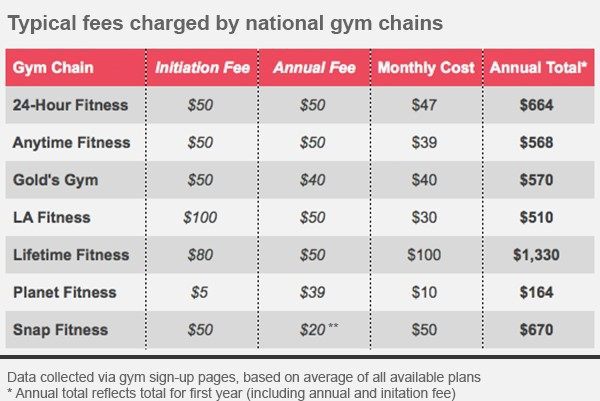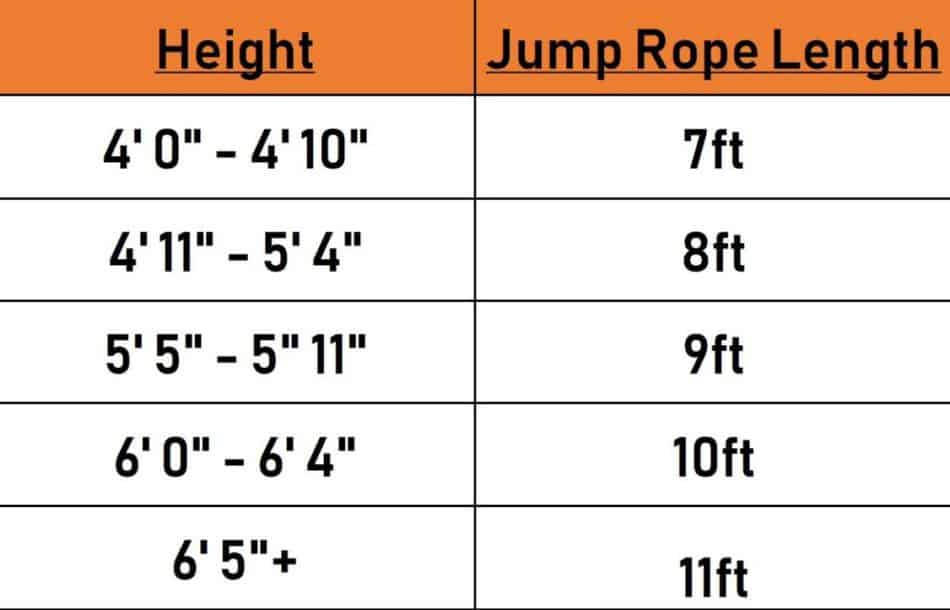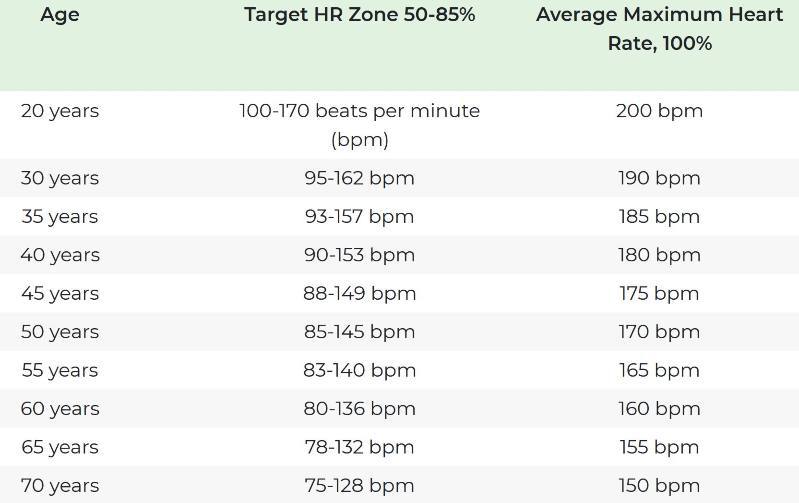Jumping rope has become one of the most popular forms of cardio, and for good reason. There are numerous health benefits associated with jumping rope.
Jumping for just a few times each week can help with everything from losing weight and building muscle, to improving heart health and enhancing coordination.
There is a lot of evidence to support these claims, too.
I’ve gathered all that data, and the supporting studies, to create the most comprehensive list of jump rope benefits available. And I’ve made sure to cite each of my sources below, for anyone interested in learning more.
Additionally, I have included 7 helpful tips for getting the most out of your jump rope workouts and enabling you to tap into the full potential of all 11 benefits.
1. Burns more calories than most cardio
One benefit jumping rope provides is the ability to burn calories quicker and more efficiently than most other forms of cardio. It burns more calories than cycling, rowing, jogging, and even swimming!
Look at the following chart to see how jumping rope stacks up against other cardiovascular exercises.

This makes hitting your weight loss goals and achieving your “Summer body” significantly easier. It also means you don’t need to spend nearly as much time in the gym.
How many calories you burn depends on a couple variables. Your weight and the intensity at which you jump (the pace) will both factor into how many calories you burn jumping rope.
To get a more accurate idea of how many calories you can expect to burn, take a look at our Jump Rope Calories Calculator.
One of the advantages of burning more calories is the positive effect it can have on your body mass index (BMI). BMI is a measure of body fat based on height and weight. Not only is it good indicator of general health, but it can also help identify potential health problems related to weight.
One study, following 20 overweight female college students, found that three 30-minute jump rope sessions per week, for four weeks, reduced BMI significantly more than the control group using an exercise bike.
2. Improves stamina
Another benefit of jumping rope is its ability to improve stamina.
Stamina, or the ability to sustain prolonged physical or mental effort, is one of the benefits from performing any cardiovascular or aerobic exercises.
However, one of the advantages of jumping rope is how quickly stamina can be improved.
It’s why many endurance athletes incorporate jump rope into their training regimens. Boxers, for example, will often jump rope multiple times a day. This is what enables them to go an entire 12 rounds (36 minutes).
One study, following amateur endurance runners, found that just 2-4 jump rope sessions per week, for 10 weeks, significantly improved their 3-km time trial performance.
The benefit of improved stamina doesn’t only translate to physical performance, either.
Gaining additional stamina can help you stay more focused throughout the day, perform your daily activities at a higher level, and prevent feelings of fatigue or exhaustion.
3. Builds muscle
Jumping rope is a great way to build muscle. And it’s a full-body workout!
When jumping rope, you’re engaging both the upper and lower body in a way many other forms of cardio do not. This unique benefit can help shape your body in a very short amount of time.
Obviously, the quads, glutes, hamstrings, and calves are the primary muscle groups engaged. But the shoulders, back, and abdominal muscles are also worked.
This is especially true when utilizing a weighted jump rope.
Regardless of the type of jump rope used, data suggests that jumping rope regularly is correlated with a noticeable improvement in strength and power.
One study, following a group of 9- and 10-year-old students, found 15 weeks of jump-rope training improved power by as much as 99.48%.
Additionally, there are certain movements you can do with a jump rope to target individual muscle groups more than others. See the following article for tips on how to isolate specific muscle groups.
Muscles Worked When Jumping Rope
4. Promotes better posture
Better posture is another thing you’ll gain from jumping rope.
When you jump rope, with proper form, your shoulders are back, your head is up, your spine erect, and your core engaged. All of which are key to a healthy and stable posture.
With consistency, this should translate into your everyday life.
With better posture, you should find yourself with less tension in your shoulders and neck, improved circulation and digestion, less back pain, and you may even notice yourself an inch or two taller.
That’s right, better posture can actually cause you to appear slightly taller due to slouching less.
Can Jumping Rope Make You Taller?
All of these are especially beneficial for anyone working a sedentary job. For those of us that sit at a desk all day, posture is often one of the first things to be negatively affected.
This can lead to a great deal of pain and in some cases injury.
5. Enhances coordination
Enhanced coordination is another amazing benefit that jumping rope provides.
There aren’t too many cardio exercises that require the level of coordination jumping rope requires, either.
To jump rope, you need both your hands and feet to be in sync. It requires timing and rhythm. It’s kind of similar to rubbing your belly and patting your head. It takes focus and hand-eye coordination.
And that’s just performing the basic jump.
When you start to incorporate more advanced moves into your routine it requires even greater coordination and timing. Crossovers, double-unders, etc., these all test your hand-eye coordination in a way that most other forms of cardio do not.
One study, following a group of preadolescent soccer players, found that 8-weeks of jump rope training significantly improved their general motor coordination.
And that was after only 8 weeks of training! Just imagine what it can do for your coordination after months of consistent training.
This is another reason why many athletes, such as Boxers, utilize a jump rope. The ability to use a variety of different muscles and limbs, at the same time, is critical to their success.
6. Strengthens bones
Stronger and denser bones is another pay off from jumping rope regularly.
This is especially beneficial for children going through puberty as it can significantly reduce the risks of osteoporosis later in their life.
Either way, building stronger bones is incredibly important because of how heavily your internal organs and muscles rely on them for protection.
While jumping rope is a low-impact exercise, there is some impact which your bones and muscles absorb. The impact and weight loaded onto your bones is what strengthens them over time. This additional strength is more commonly referred to as “bone mineral density” (BMD).
One study, following 176 young Chinese girls (12.23 years old), found that one hour of jump rope training per week, over the course of about 10 months, resulted in higher levels of BMD than the control group.
The benefit from stronger bones can’t be understated when talking about longevity. Studies suggest that after the age of 35 both men and woman experience about 1% bone loss per year.
Another great reason to pick up a jump rope.
7. Improves heart health
In terms of overall health and wellness, a healthy heart is one of the biggest benefits from jumping rope.
The data supporting cardiovascular exercise and its effect on heart health has long been documented. The American Heart Association has been pushing this narrative for years. They believe in it so much they created an entire foundation dedicated to jumping rope.
Jump Rope for Heart, or the Heart Foundation, was created more than 38 years ago to promote an active lifestyle and help fund groundbreaking research to fight heart disease.
And the data is clear…
People who participate in rigorous activity, at least 2 days per week, have a 50% lower risk of coronary events, such as a heart attack.
Rigorous activity is defined as increasing your heart rate to about 70 – 85% of its maximum. And jumping rope is a great tool at helping you achieve that target heart rate.
Identifying your maximum heart rate depends on your age. Use the chart above, from the American Heart Association, to help you identify what your maximum and target heart rate is.
8. Convenient workout
Jumping rope is one of the most convenient forms of cardio.
You can literally jump rope anywhere! I’ll often climb out of bed in the morning and jump rope in my room. It’s a great way to get your exercise out of the way, first thing in the morning.
Regardless of when you exercise, convenience is one of the most important elements for creating a sustainable workout plan. If your fitness routine isn’t convenient, it’s easy to convince yourself to skip it.
One study of residents living in Georgia found that people with somewhere to exercise, 10 minutes or less from home, were significantly more likely to meet current recommendations for daily physical activity than those who had to travel further than 10 minutes.
This is just one small case study highlighting the importance of convenience. My guess is you can think of examples from your own life.
Jumping rope doesn’t require anything other than the rope itself. You can jump rope in your home (assuming the ceiling is high enough), on your porch, your backyard, etc.
It doesn’t require a commute, it doesn’t require expensive monthly memberships, only the cost of the jump rope. Now that’s a benefit!
9. Low-impact exercise
The impact on your body from jumping rope is a huge benefit, especially for those who experience pain in their joints from running or jogging.
It’s also something many people don’t know about jumping rope.
You wouldn’t think jumping up and down for an extended period of time would be easy on your body, but it is! When done properly, jumping rope is much easier on your joints, particularly your knees, than running.
When you jump rope, your knees are slightly bent which loads the weight of your body onto your muscles. Not only does this help build stronger leg muscles, but it reduces the potential damage to your joints.
Rope jumping also strengthens the muscles that support the ligaments and tendons in the knees, ankles, and feet which greatly reduces the risk of injury and can aid in the recovery after an injury.
It is important to mention that overweight individuals should consult with their doctor before jumping rope. Carrying too much excess weight could potentially put you at risk for injury.
It’s definitely worth looking into, though!
10. Develops balance
Developing better balance is another advantage of working out with a jump rope.
Many of the activities we do daily require balance. Walking up a flight of stairs, dancing, carrying groceries, the list goes on.
One of the best ways to improve your balance is by jumping rope.
When you jump rope, you’re jumping on the balls of your feet. And often you’ll alternate between feet, jumping on one foot and then the other. This movement trains your ability to distribute your weight evenly and remain upright and steady.
This ability to distribute weight evenly is commonly referred to as “center of balance”.
One study, following a group of preadolescent Soccer players, found that after only 8-weeks of jump rope training their balance on both their right and left legs improved tremendously.
Ensuring you have a strong and sturdy center of balance is important, especially as we age. As we get older, and our bodies become weaker, a slip and fall becomes significantly more likely.
With a strong center of balance not only are you less likely to slip and fall, but the odds of sustaining an injury if you fall becomes reduced as well.
And it only takes a few minutes of jumping rope each day to help develop your balance.
11. Affordable alternative to gym membership
The last major benefit of jumping rope is how affordable it is compared to other forms of fitness.
It only costs $20 or $30 for a solid jump rope, and that’s a one-time cost. Whereas a gym membership is likely to cost you that same amount, every month. Or more!
Everywhere you look there’s someone trying to sell you a new workout plan or a new “game-changing” piece of exercise equipment. The truth is you don’t need any of that.
I’ve personally learned the hard way and tried tons of different supplements and training programs.
Nothing has ever compared to jumping rope everyday and getting my diet in check. It’s literally so simple, which is why I hate seeing people spend a bunch of money with these “gurus”.
Here is a chart showing the typical fees and membership costs for some of the most popular gyms in the United States.

Save yourself some money and pick up a jump rope.
Jump Rope Tips to Unlock the Full Potential of All 11 Benefits (Form & Fundamentals)
Like any exercise, mastering the fundamentals and the basics is key to getting the most out of your workouts. It’s also extremely important to prevent yourself from getting injured.
Most of these are simple but may take some practice.
If you’re willing to take the time to master each one, I guarantee you’ll be able to get more out of your jump rope workouts and see amazing results over time.
Here are the 7 jump rope tips to help you jump rope with proper form, jump rope safely, and unlock the full potential of all 11 benefits.
Stay off your heels
The first key to getting the most out of your jump rope workouts is making sure to stay on the balls of your feet. Your heels shouldn’t touch the ground at all.
This is going to ensure your calves are engaged and keep you from injuring your heels.
If you’re having trouble staying on the balls of your feet, try jumping without the rope. It can also help to jump in front of a mirror.
Keep your knees slightly bent
The next key to maximizing the benefits of your jump rope is to ensure your knees are slightly bent while you jump. This one is critical to jumping rope safely.
When you keep your knees bent, the weight of your body is loaded onto your muscles as opposed to the joints in your knees.
You shouldn’t feel any pressure on your knees.
And don’t over exaggerate the bend. You almost shouldn’t be able to tell you’re bending at the knees when looking at yourself in the mirror.
Elbows tucked to your side
Key #3 is important for jumping rope efficiently.
Flailing your arms is a common mistake made by newer jumpers. You can tell right away by how awkward it looks and how inefficiently they are using their body and momentum.
Instead, keep your elbows tucked to your side. You’ll find by doing this you can jump rope longer and with less effort.
Wrists pointed outwards
In addition to keeping your elbows tucked to your side, make sure you’re pointing your wrists away from your body.
This is going to feel the most normal and fluent once you master it.
It’s also going to make a huge difference when practicing freestyle jump rope. It’s going to be nearly impossible to freestyle jump rope without keeping your wrists pointed outward.
Size your jump rope correctly
It’s also critical to make sure the jump rope you’re using is sized correctly.
By using a jump rope that’s too long, it’ll be difficult to find any sort of rhythm in your routine. Alternatively, using a jump rope that’s too short will make it challenging to clear the rope without hunching over and compromising your form.
Use the following chart to figure out what length is best for you.

Additionally, depending on the jump rope you’re using, you may need to size it manually. Check out our Jump Rope Sizing article for more info on how to size a variety of different ropes.
Small, controlled jumps
The 6th key to maximizing the benefits from your jump rope is keeping your jumps small and controlled.
One of the easiest ways to spot an amateur jumper is by how high they jump off the ground. You’ll find you get exhausted much quicker and have difficulty finding your rhythm.
Instead, jump only as high as you need to. You shouldn’t be jumping more than a couple inches of the ground. Just enough to allow the rope to pass under you.
Use your wrists to rotate the rope
Another common mistake when learning how to jump rope is wanting to use your entire arm to rotate the rope. Don’t do this!
You should be making small circles with your wrists to turn the rope.
By using your wrists to rotate the jump rope you’ll be able to jump rope much longer and have a much easier time finding your rhythm. This is key to being able to jump rope for 20 or 30 minutes straight.
Related Questions
Benefits of jumping rope everyday
There are numerous health benefits from exercising regularly. Clearer skin, better sleep, elevated mood, the list goes on. It’s also important for overall health and can significantly reduce your risk for a variety of diseases.
It’s recommended that adults get at least 150 minutes of moderate aerobic activity, or 75 minutes of vigorous aerobic activity, every week.
That’s the bare minimum. However, if you were to perform aerobic exercise daily, like jumping rope, those benefits would be amplified greatly.
What are the benefits of jumping rope everyday?
Jumping rope everyday is beneficial for weight management, stress reduction, and improving balance and motor skills. These benefits include building a healthy heart and stronger muscles. It’s important to consult your doctor before jumping rope everyday, to avoid injury.
Look at the following article for more information and tips on Jumping Rope Everyday.
If you’re new to jumping rope, it’s usually best to start out slow. Try jumping for a couple days your first week. Depending on how you feel towards the end of the week, increase the number of days you jump the following week.
Do this every week until you reach your goal of jumping rope daily.
Jump rope benefits belly fat
A common misconception when it comes to jumping rope, and other forms of cardio, is the ability to “spot reduce” fat. Targeting belly fat, alone, or other areas of body fat, is impossible.
That’s not to say jumping rope isn’t a good exercise for burning belly fat. It absolutely is!
How does jumping rope benefit belly fat?
Jumping rope is one of the most efficient forms of cardio (burning more than 700 calories per hour), which makes it one of the best forms of cardio for reducing belly fat. It’s especially beneficial for belly fat when paired with a healthy diet.
Without a healthy diet (that achieves a calorie deficit), no amount of cardio or exercise will reduce belly fat.
I will usually jump rope for about 30 minutes everyday, which ensures I burn around 500 calories. Your weight and the pace at which you jump will ultimately determine how many calories you’re burning. You can use our calculator to see how many calories that is for you.
By burning 500 calories per day, I’m able to eat around 2500 calories and still end each day with about a 500-calorie deficit.
Consistently hitting this calorie deficit ensures I’m able to lose weight (burn fat). Overtime, that weight loss will show in the reduction of belly fat.
Regardless of how much you jump rope or how little you eat, weight loss takes time, especially when targeting the midsection. Be patient and by consistent.
Jump rope brain benefits
It’s been long documented that exercise can have incredible effects on the brain and its ability to function as we age. This is especially true for aerobic exercises like jumping rope.
How does jump rope benefit the brain?
Jumping rope has been shown to benefit the brain in a variety of ways. Jumping rope regularly seems to increase the production of new neurons and neurotrophic factors in the hippocampus, benefiting cognitive function. This is particularly true for an aged brain with neurodegenerative disorders that are associated with cognitive decline.
In addition to improving cognitive function, jumping rope has been shown to release various neurotransmitters which have a positive effect on mood, attention, and ability to learn.
These neurotransmitters, Serotonin, Dopamine, and Norepinephrine are released immediately when jumping rope.
The release of these brain chemicals will have feeling more awake and attentive, elevate your mood, and increase your ability to retain information. As you can imagine, all of these can have a profound effect on your life.
Check out our list of the Best Jump Ropes to get your jump rope today.

